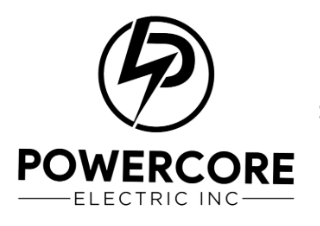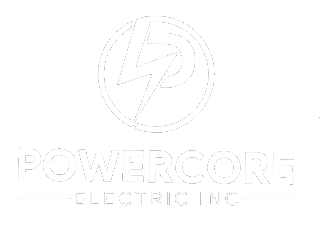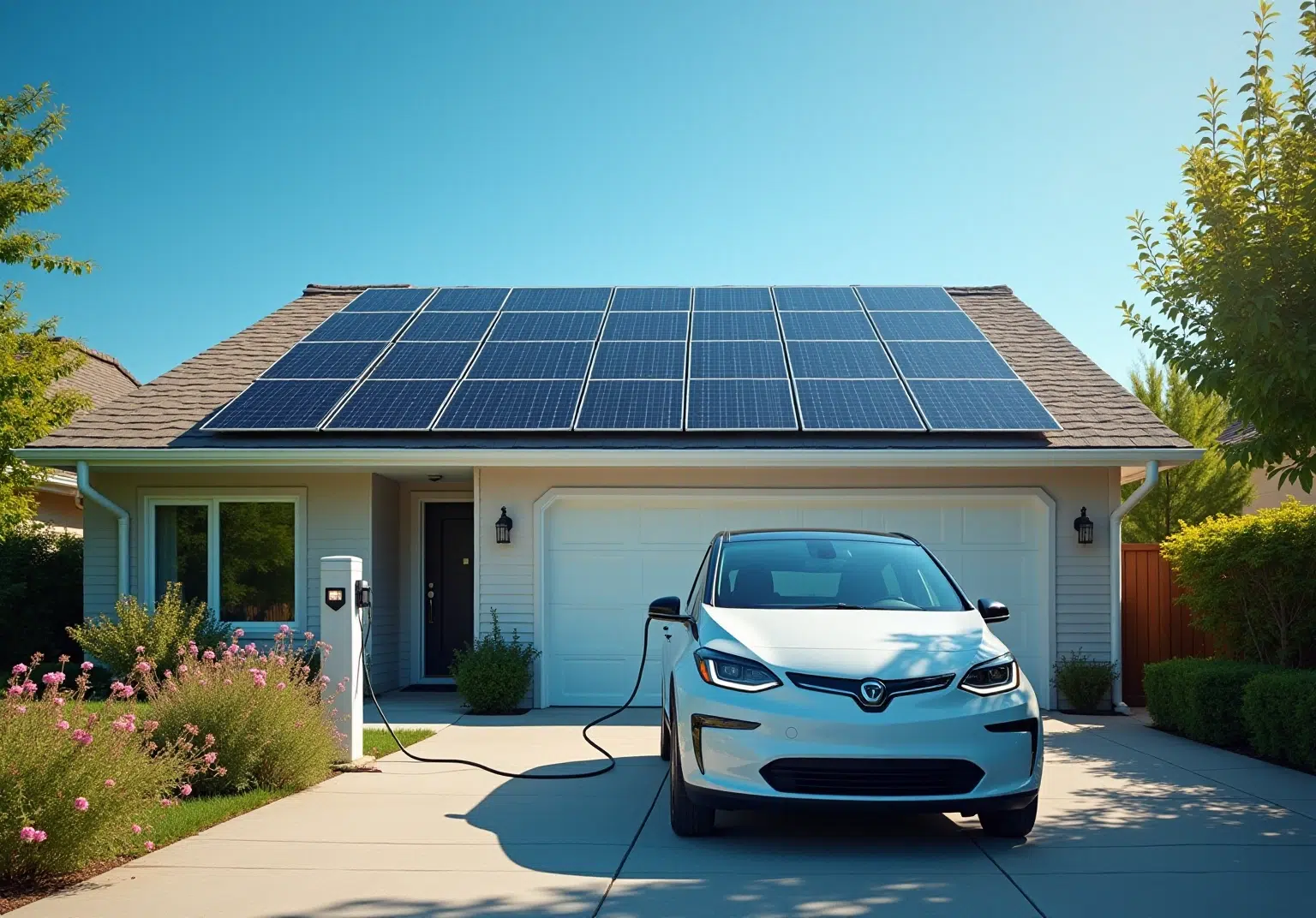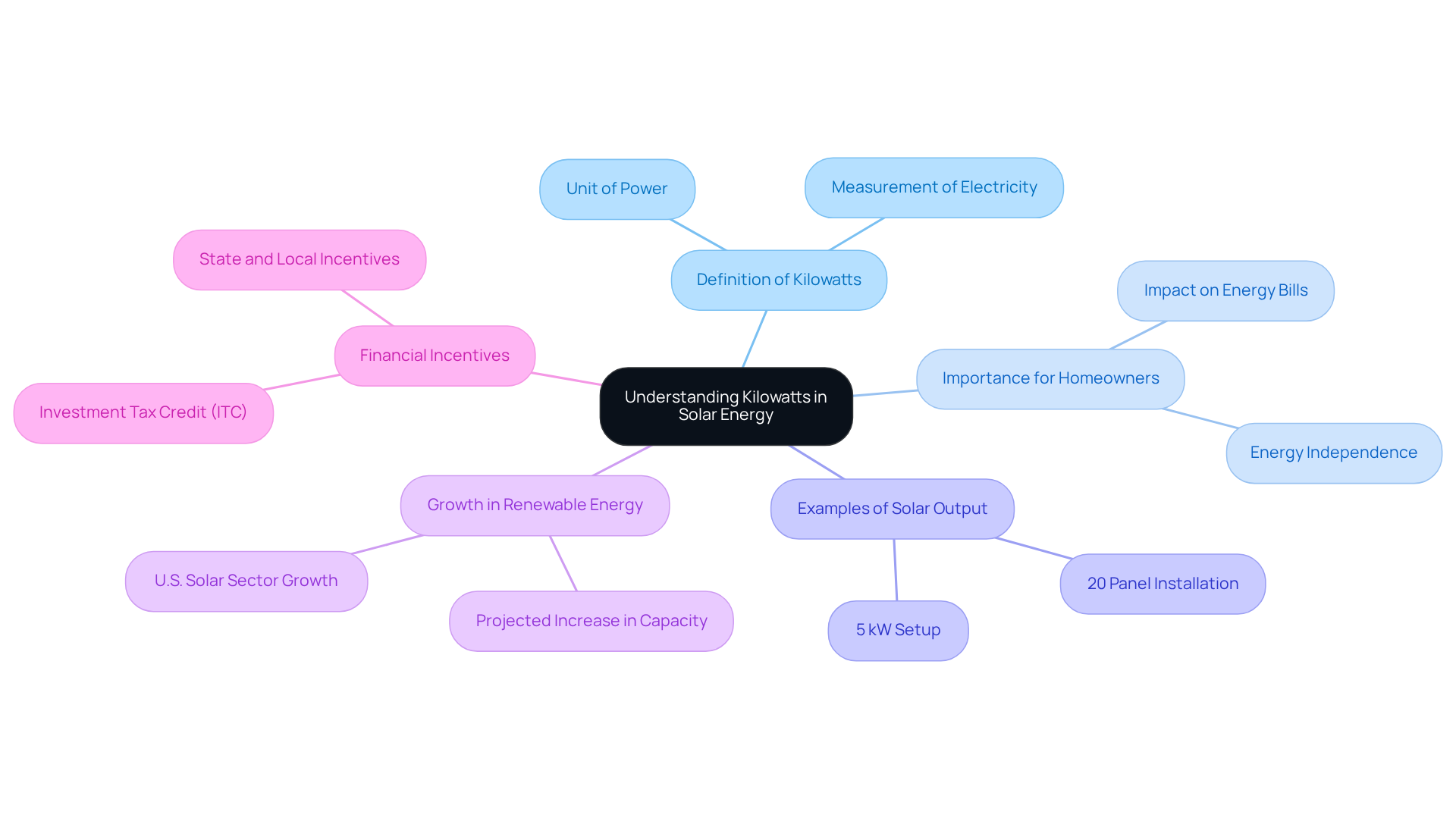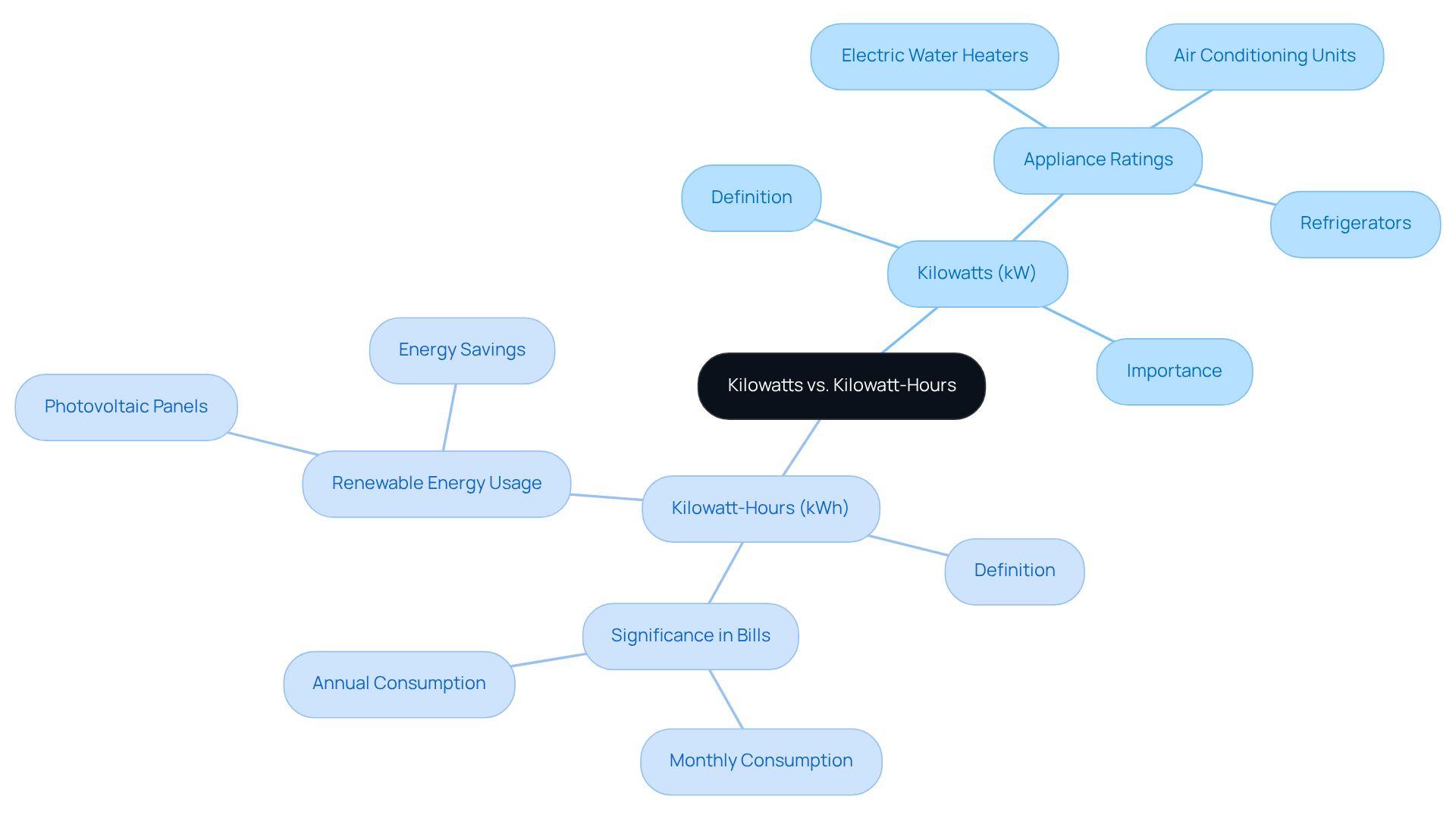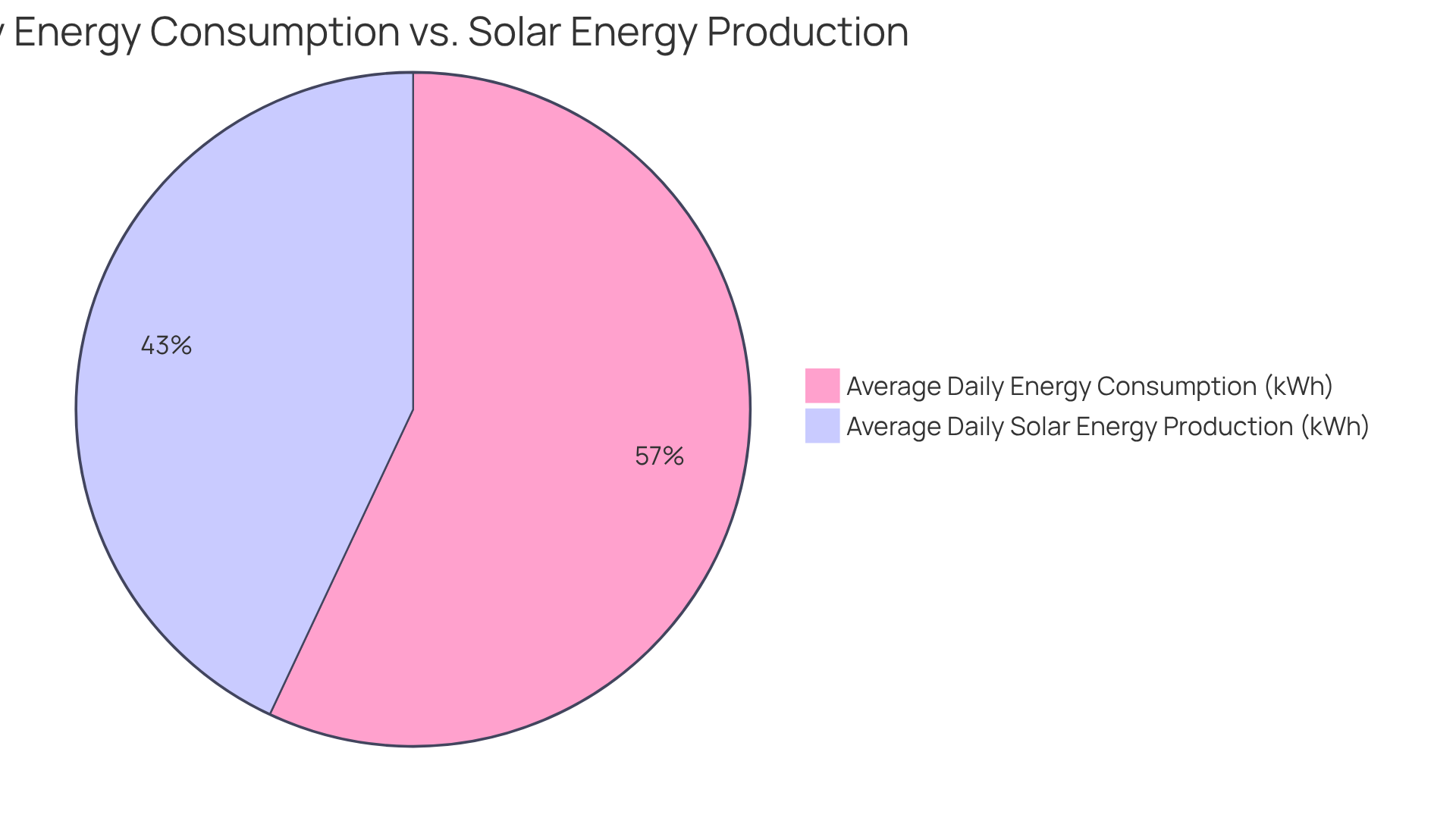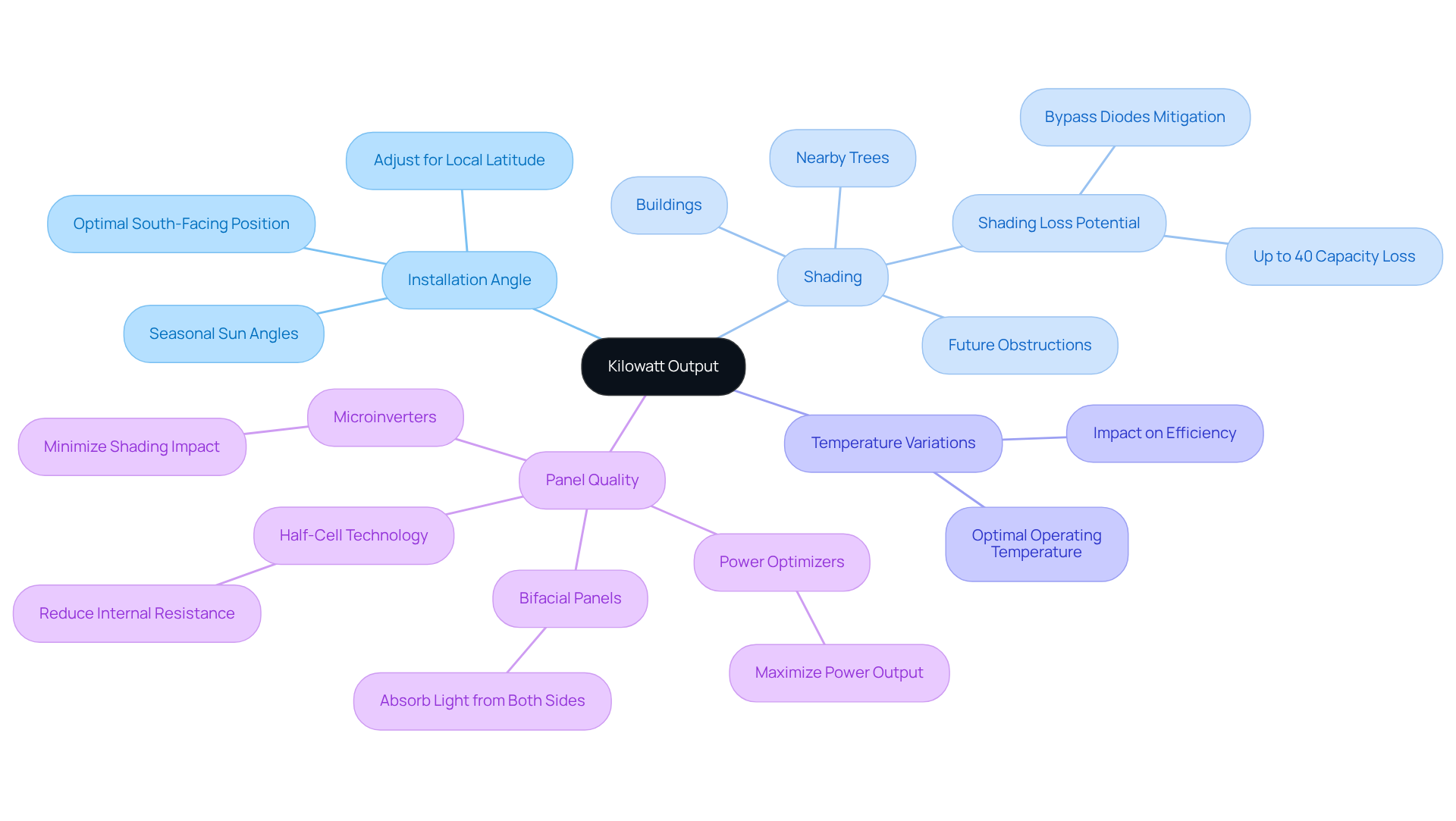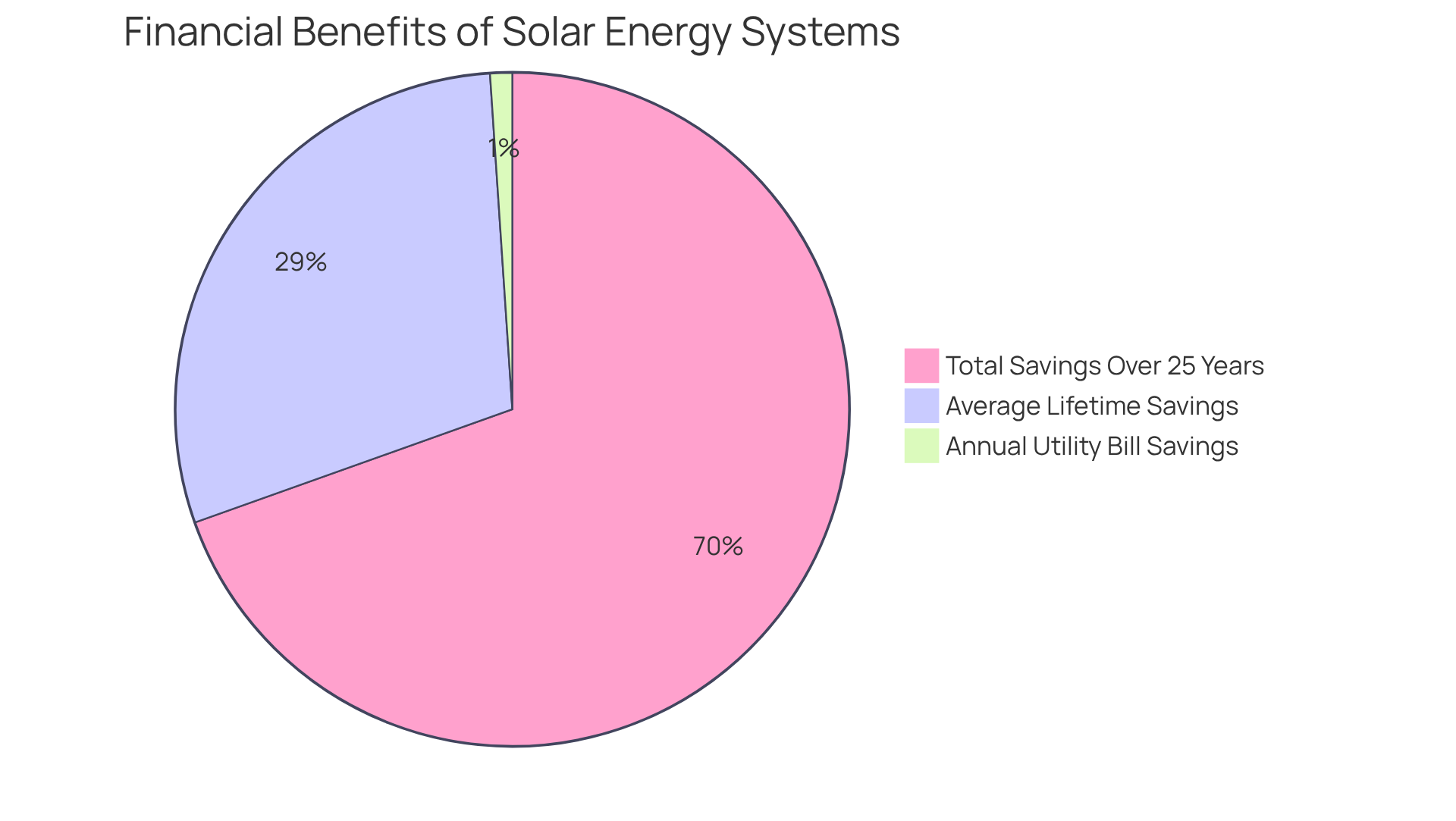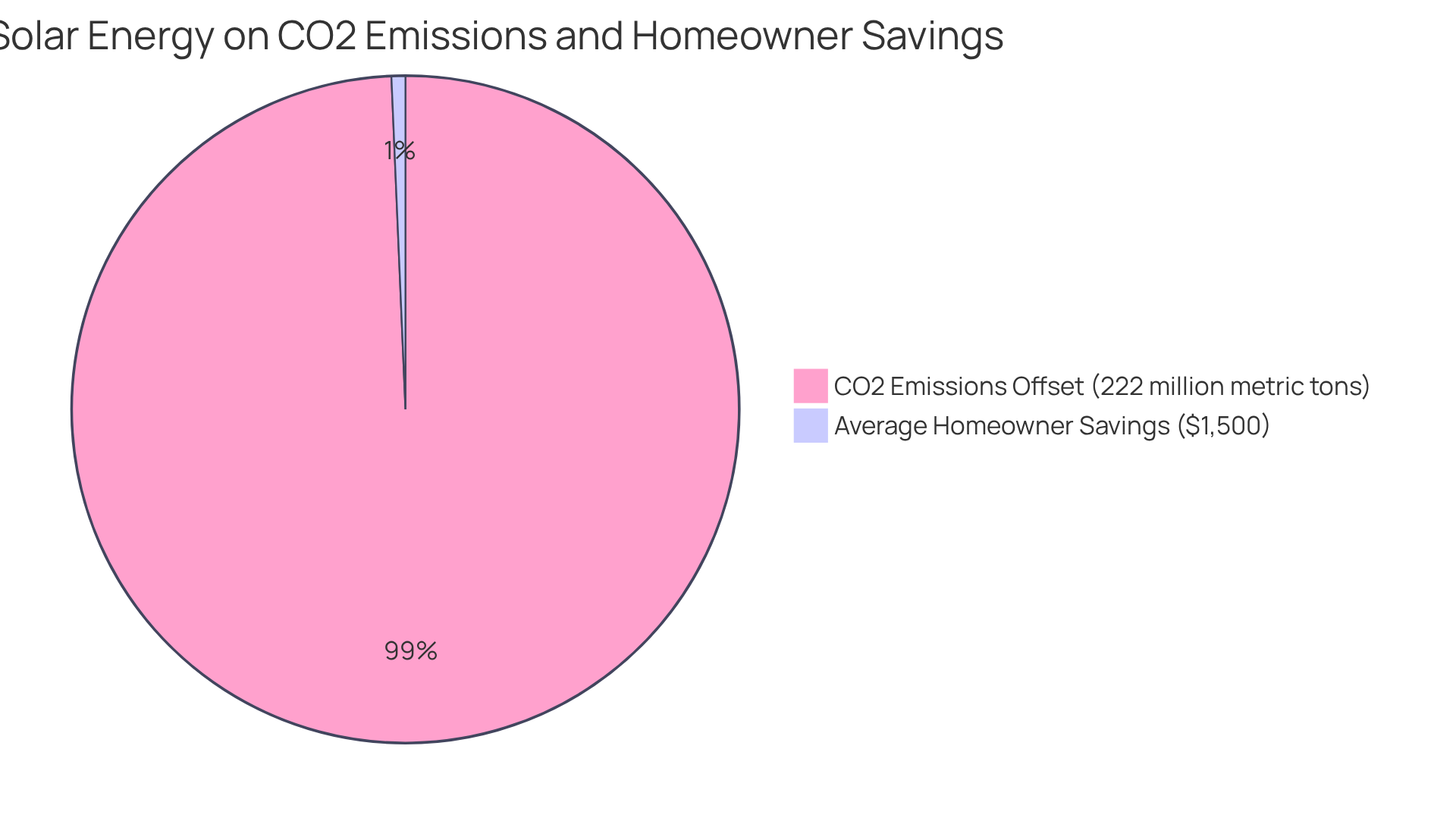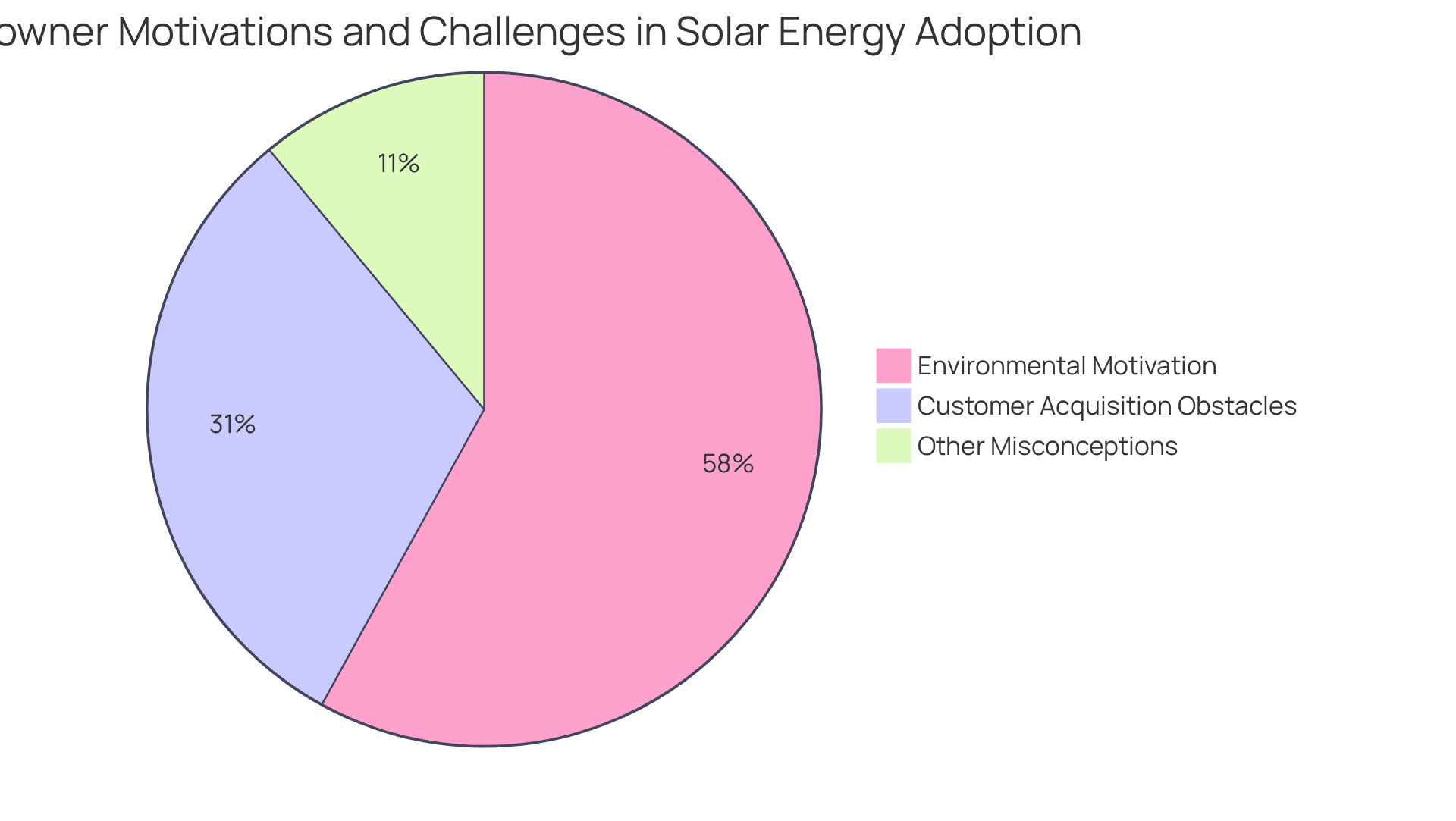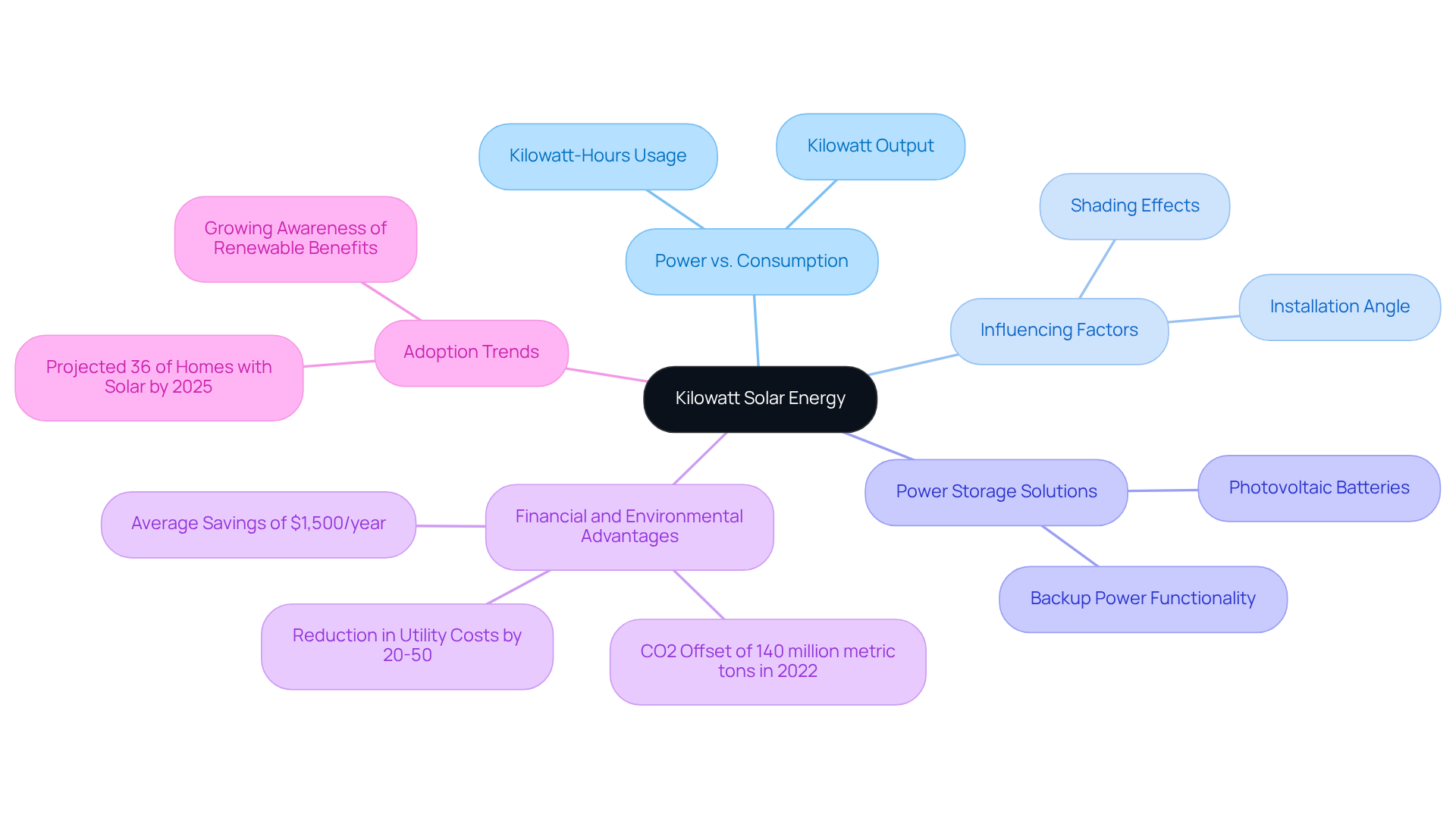Overview
The article titled “10 Essential Insights About Kilowatt Solar for Homeowners” is designed to address the concerns that many homeowners have about rising energy bills. We understand that navigating energy costs can be overwhelming, and this article aims to provide you with crucial information regarding kilowatt solar systems and their benefits.
By grasping the importance of kilowatt measurements, you can evaluate energy production and consumption more effectively. This understanding not only empowers you to make informed decisions but can also lead to significant financial savings and environmental benefits.
Together, we can explore how solar energy can pave the way towards greater energy independence and a more sustainable future.
Introduction
We understand that navigating the complexities of solar energy can feel overwhelming for homeowners, particularly as energy bills continue to rise. Kilowatt solar systems present a promising solution, enabling individuals to harness renewable energy while potentially saving thousands over time.
However, with the abundance of information available, how can you discern the essential insights that will empower you to make informed decisions? This article explores ten crucial aspects of kilowatt solar energy, shedding light on the benefits, challenges, and opportunities that come with investing in this sustainable technology.
Together, we can work towards a brighter, more energy-independent future.
Powercore Electric: Leading Provider of Solar Energy Solutions
For over 30 years, Powercore Electric Inc. has been a trusted partner in providing renewable solutions, dedicated to supporting the California community with exceptional service. As a family-operated business in Roseville, California, we focus on:
- Residential photovoltaic installations
- Kilowatt solar systems
- Storage systems
- EV charging solutions
- Backup generators
We understand that rising energy bills can be a concern for many homeowners, and our commitment to innovative technology empowers you to harness renewable resources effectively. This positions us as a leading supplier in the rapidly evolving kilowatt solar sector.
With California’s expected to experience significant growth, family-owned businesses like Powercore Electric are ready to embrace this opportunity, reflecting a growing trend towards personalized service and community engagement in sustainable resources. Together, we can work towards a future where energy independence is within your reach. Let us guide you through the process of making informed decisions for your energy needs, ensuring you feel supported every step of the way.
Understanding Kilowatts: The Power Behind Solar Energy
As a homeowner, you may often find yourself concerned about rising energy bills. A kilowatt (kW) is a unit of power that measures the rate at which electricity is produced or used, and understanding this concept is vital for making informed decisions about your energy consumption. In photovoltaic installations, the kilowatt solar output represents the peak production of the panels under optimal circumstances. For instance, a 5 kW photovoltaic setup can generate 5 kilowatts of power at peak performance. This knowledge is essential for grasping how much electricity your installation can supply to your home.
We understand that navigating the world of energy solutions can be overwhelming, but is crucial for assessing your photovoltaic options. This understanding directly impacts your potential savings and the efficiency of your system. Recent advancements in photovoltaic technology, such as high-efficiency panels like the SunPower Maxeon series, can achieve outputs of 400 watts per panel. Imagine a typical residential installation of 20 panels yielding a total capacity of 8 kW—this significantly enhances your energy independence and reduces reliance on the grid.
Moreover, it’s common to feel uncertain about the future, but the U.S. renewable energy sector is projected to nearly triple in size, with an estimated increase of 236 gigawatts in installation capacity by 2028. This growth highlights the importance of kilowatt solar measurements in assessing the feasibility and efficiency of photovoltaic systems. Together, we can utilize this information to make informed choices regarding your power requirements and investments in photovoltaic technology.
Furthermore, you can take advantage of the Investment Tax Credit (ITC), which allows you to deduct 30% of your panel installation costs from federal income taxes. This can greatly improve the financial viability of your investments in renewable energy. Remember, comprehending kilowatt solar measurements is crucial for maximizing the benefits of your solar power system. Let’s work towards a brighter, more sustainable future together.
Kilowatts vs. Kilowatt-Hours: Key Differences Explained
Understanding kilowatts (kW) and kilowatt-hours (kWh) is crucial for homeowners who are concerned about their energy bills. While kilowatts measure instantaneous power, kilowatt-hours quantify usage over time, helping you grasp how your impacts your finances. For instance, a 1 kW photovoltaic panel operating for one hour generates 1 kWh of power. This distinction is vital for evaluating the efficiency of your solar systems and managing power usage effectively.
In 2025, the average U.S. household consumes approximately 890 kWh per month, translating to about 10,500 kWh annually. By understanding how kilowatt-hours affect utility costs, you can make informed choices regarding your consumption. Have you ever considered how your appliances’ power ratings in kilowatts influence your monthly usage? By multiplying the kW rating by the number of hours used, you can convert this to kWh, providing clarity on your energy habits.
Comprehending kilowatt-hours is especially important for those using renewable power systems. By comparing the kWh production from your photovoltaic panels against your grid consumption, you can estimate your potential savings. This knowledge empowers you to enhance your power consumption practices, leading to significant reductions in electricity expenses and a more sustainable lifestyle. Together, we can work towards a greener future, ensuring that your energy choices not only benefit you but also the environment.
Measuring Solar Output: How Kilowatts Determine Energy Production
Understanding the rising energy bills can be overwhelming for homeowners. Energy output, measured in kilowatts (kW) and kilowatt-hours (kWh), is essential for understanding how kilowatt solar systems produce energy. By tracking kW performance during peak sunlight hours, homeowners can effectively monitor their energy output. For instance, a solar setup rated at 8.28 kilowatt solar can produce a maximum of 6.6 kW under ideal conditions. If this system operates at full capacity for 5 hours, it generates 33 kWh of power, significantly supporting household energy needs. Remarkably, the highest daily output recorded was 56 kWh, showcasing the potential for power generation during peak sunlight hours.
We understand that monitoring systems are crucial for ensuring energy installations operate efficiently. Homeowners like Joshua Tauberer have shared their experiences, noting that their solar panels generated an average of 40 kWh each day, covering about 38% of their power consumption in the first year. Joshua expressed, “In a sense, 75% of our power utilized that month came from the sun.” This level of tracking not only provides but also helps identify any performance issues that may arise.
Looking ahead to 2025, it’s clear that overseeing system performance is more important than ever. Property owners can utilize various tools and applications to monitor their power generation in real-time. Analysts emphasize that consistent monitoring can lead to better maintenance decisions and enhanced resource savings. By understanding the difference between kW and kWh, homeowners can make informed choices about their energy usage and maximize the benefits of their kilowatt solar investments. Additionally, the average daily energy consumption of a household was 53 kWh, underscoring the critical role of renewable energy production in meeting overall energy needs. Together, we can work towards a more sustainable future.
Factors Affecting Kilowatt Output: What Homeowners Should Know
We understand that energy bills can be a significant concern for homeowners. The output of photovoltaic panels in kilowatt solar is influenced by several critical factors, including:
- The angle of installation
- Shading from nearby trees or buildings
- Temperature variations
- The overall quality of the photovoltaic panels
To help you attain peak performance, it’s essential to ensure that your panels are installed at the proper angle, typically favoring south-facing positions in the Northern Hemisphere to maximize sunlight exposure. Furthermore, steering clear of known shading sources is crucial, as shading can lead to substantial power loss—up to 40% of energy capacity can be lost due to shading effects, as highlighted by energy specialists.
Routine upkeep, such as washing the panels to eliminate dust and debris, can further improve power generation. It’s common to feel overwhelmed by these details, but perspectives from renewable power experts highlight the significance of employing cutting-edge technologies like microinverters and power optimizers. These technologies allow each panel to function at its , enhancing performance even in shaded environments.
Effective installations often incorporate these strategies, demonstrating that with meticulous planning and execution, we can greatly enhance renewable efficiency together. Remember, you’re not alone in this journey towards energy independence; we’re here to support you every step of the way.
Energy Storage Solutions: Enhancing Kilowatt Efficiency with Powercore Electric
Are you feeling overwhelmed by rising energy bills? Power storage solutions, particularly solar batteries, can significantly enhance the effectiveness of solar power systems, offering you a sense of relief. By capturing surplus power produced during sunny periods, you can utilize this stored energy during peak demand times or when sunlight is not available. This capability not only improves resource use but also reduces your dependence on the grid, leading to meaningful cost savings.
In 2025, advancements in photovoltaic battery technology have made these systems more efficient and affordable, with lithium-ion battery pack prices decreasing by 82% since 2013. This notable decrease in expense has made photovoltaic batteries more accessible for homeowners like you, empowering you to manage your power usage effectively. Many property owners have reported significant reductions in their utility costs by using battery systems to store power when prices are low and releasing it during high-demand periods.
Experts emphasize the importance of power storage in maximizing your investment in renewable energy. Johanna Neumann, Senior Director of the Campaign for 100% Renewable Energy, notes, “Battery energy storage helps to support the use of more renewable energy and keep the lights on during extreme weather and times of grid stress.” This reliability is crucial as the U.S. renewable energy sector continues to grow, with forecasts predicting an average increase of 43 GW each year until 2030.
Real-world examples illustrate the benefits of battery storage for renewable energy. Homeowners utilizing these systems have effectively navigated power interruptions, ensuring their homes remain safe and functional while enjoying the financial benefits of lower utility costs. For instance, families in California have successfully employed energy storage systems to maintain power during outages, keeping their homes operational and comfortable.
To maximize the benefits of battery systems, consider monitoring your power consumption habits and strategically charging your batteries during non-peak times. Powercore Electric’s advanced power storage solutions can help you transition to sustainable practices, ensuring a reliable power supply and enhancing your overall independence. Together, we can work towards a more .
Financial Benefits of Kilowatt Solar: Cost Savings and ROI
We understand that managing energy bills can be a significant concern for homeowners. Investing in a kilowatt solar renewable energy system not only alleviates this worry but also provides substantial financial benefits. By reducing reliance on grid electricity, you could save an average of approximately $1,800 each year on your utility bills. Imagine the relief of knowing that your energy costs are under control!
Moreover, renewable energy installations can enhance your property’s value while providing an attractive return on investment. Typically, these systems can recoup their costs within about 5.17 years, influenced by local power prices and available incentives. For instance, if you install a kilowatt solar photovoltaic system in California, you could save around $118,316 over 25 years, showcasing the long-term economic advantages of embracing renewable energy.
Furthermore, U.S. homeowners can expect to save an average of $50,000 throughout the lifespan of their photovoltaic systems. With the federal tax incentive allowing for a , the financial feasibility of investing in renewable energy becomes even more appealing. This makes it a wonderful choice for those who care about the environment and their financial future.
As Brett Johnson notes, homes equipped with photovoltaic panels tend to sell faster and for about 6.9% more than those without. This fact further underscores the value of such installations. Together, let’s explore how you can make a positive change for your home and the planet, ensuring both energy independence and financial savings.
Environmental Impact: How Kilowatt Solar Contributes to Sustainability
We understand that can be a significant concern for homeowners. Kilowatt solar energy solutions provide a nurturing path towards sustainability, significantly reducing greenhouse gas emissions and our reliance on fossil fuels. Each kilowatt solar of sunlight harnessed contributes to lowering carbon footprints, making solar power a clean and renewable resource that benefits us all.
In sunny California, the potential for solar energy is immense. The adoption of photovoltaic systems has led to the offset of over 222 million metric tons of CO2 emissions, with more than 140 million metric tons offset just in 2022. This transition not only brings financial relief—averaging around $1,500 in savings each year and reducing utility bills by 20-50%—but also empowers homeowners to actively combat climate change and foster a healthier environment.
As we look towards the future, the renewable power sector is set to grow, with projections indicating an average increase of 15% each year over the next five years. Together, as individual property owners choose renewable solutions, we can make a crucial impact on achieving broader ecological goals. Let’s work towards a sustainable future, where energy independence is within reach and our planet thrives.
Debunking Myths: Common Misconceptions About Kilowatt Solar
We understand that many homeowners have concerns about renewable power, which can sometimes hinder the adoption of this sustainable solution. A common misconception is that photovoltaic panels are only effective in sunny climates. However, it’s important to know that these panels can still produce power on overcast days, showcasing their durability and effectiveness.
With an , and some high-performance models achieving nearly 23%, they truly offer reliable energy solutions. Additionally, it’s common to feel overwhelmed by the perceived installation costs. The truth is, installation costs for photovoltaic systems have significantly dropped, making renewable power more attainable than ever.
Currently, the typical expense to set up photovoltaic panels is about $2.86 per watt, equating to roughly $28,600 for an average kilowatt solar system of 10 kW, with the usual residential installation size being 7.13 kilowatts. This affordability, along with the possibility of yearly savings of around $1,500 on energy bills, highlights the economic feasibility of renewable energy.
Moreover, 58% of property owners mention environmental factors as their motivation for exploring photovoltaic solutions. Yet, 31% of renewable energy firms identify customer acquisition as a main obstacle to success. This emphasizes the need to address misconceptions to enhance adoption rates.
Together, we can inform property owners about these misunderstandings, encouraging increased acceptance of renewable energy solutions. Let’s work towards a future where everyone can benefit from the power of the sun.
Key Takeaways: Essential Facts About Kilowatt Solar Energy
Understanding kilowatt solar systems and their impact on kilowatt-hours is essential for homeowners who are concerned about their energy bills and are considering . Let’s explore some key insights that can help you on this journey:
- Power vs. Consumption: It’s common to feel confused about the difference between kilowatts (kW) and kilowatt-hours (kWh). Kilowatt solar systems measure the power output of photovoltaic panels, while kilowatt-hours quantify your usage over time. Recognizing this distinction is crucial for assessing your power needs and potential savings.
- Influencing Factors: We understand that several elements can affect energy output, such as the installation angle of your panels and shading from nearby structures or trees. By properly evaluating and planning, you can enhance your power generation using kilowatt solar technology and make the most of your investment.
- Power Storage Solutions: Integrating power storage systems, like photovoltaic batteries, can significantly improve the efficiency of your solar setup. This allows you to retain surplus power for use during peak demand or outages, giving you peace of mind.
- Financial and Environmental Advantages: Implementing a kilowatt solar system not only helps reduce electricity costs—many homeowners save an average of $1,500 each year—but it also plays a vital role in environmental sustainability by significantly cutting down carbon emissions. In 2022 alone, renewable power offset over 140 million metric tons of CO2. Additionally, photovoltaic systems can lower household utility costs by 20-50%, making them a financially wise choice.
- Adoption Trends: Looking ahead to 2025, California is anticipated to see a significant rise in renewable power adoption, with up to 36% of residential structures expected to be powered by photovoltaic systems. This trend reflects a growing awareness of the benefits of renewable sources. As Ben Zientara, a renewable energy policy analyst, notes, “Homeowners install photovoltaic panels mainly to save money, but installers say 80% of individuals opt for battery storage chiefly for its function as a backup power source.”
By considering these insights, you can make informed decisions about your solar energy investments, ensuring you maximize both your financial savings and your positive impact on the environment. Together, we can work towards a more sustainable future, and we’re here to support you every step of the way.
Conclusion
We understand that navigating the complexities of energy bills can be overwhelming for homeowners. Grasping the intricacies of kilowatt solar systems is essential for making informed decisions that not only lead to significant savings on energy expenses but also contribute to a reduced carbon footprint. By embracing kilowatt solar technology, you can promote energy independence while aligning with a broader commitment to sustainability.
Throughout this article, we’ve highlighted key insights that underscore the importance of understanding energy output, the factors influencing kilowatt production, and the financial and environmental benefits of solar installations. From the impact of proper panel installation to the advantages of integrating energy storage solutions, each element plays a crucial role in maximizing the effectiveness of solar energy systems. It’s common to feel uncertain about these aspects, yet the anticipated growth in the renewable energy sector only reinforces the relevance of these insights for you as a homeowner.
As we collectively shift towards renewable energy, it’s vital to take proactive steps in exploring kilowatt solar options. By investing in solar technology, you not only secure financial savings but also contribute to a greener planet. Together, we can pave the way for a brighter tomorrow, where informed choices and collective action lead to energy independence and sustainability. Let’s work towards a future that reflects our commitment to both our homes and our environment.
